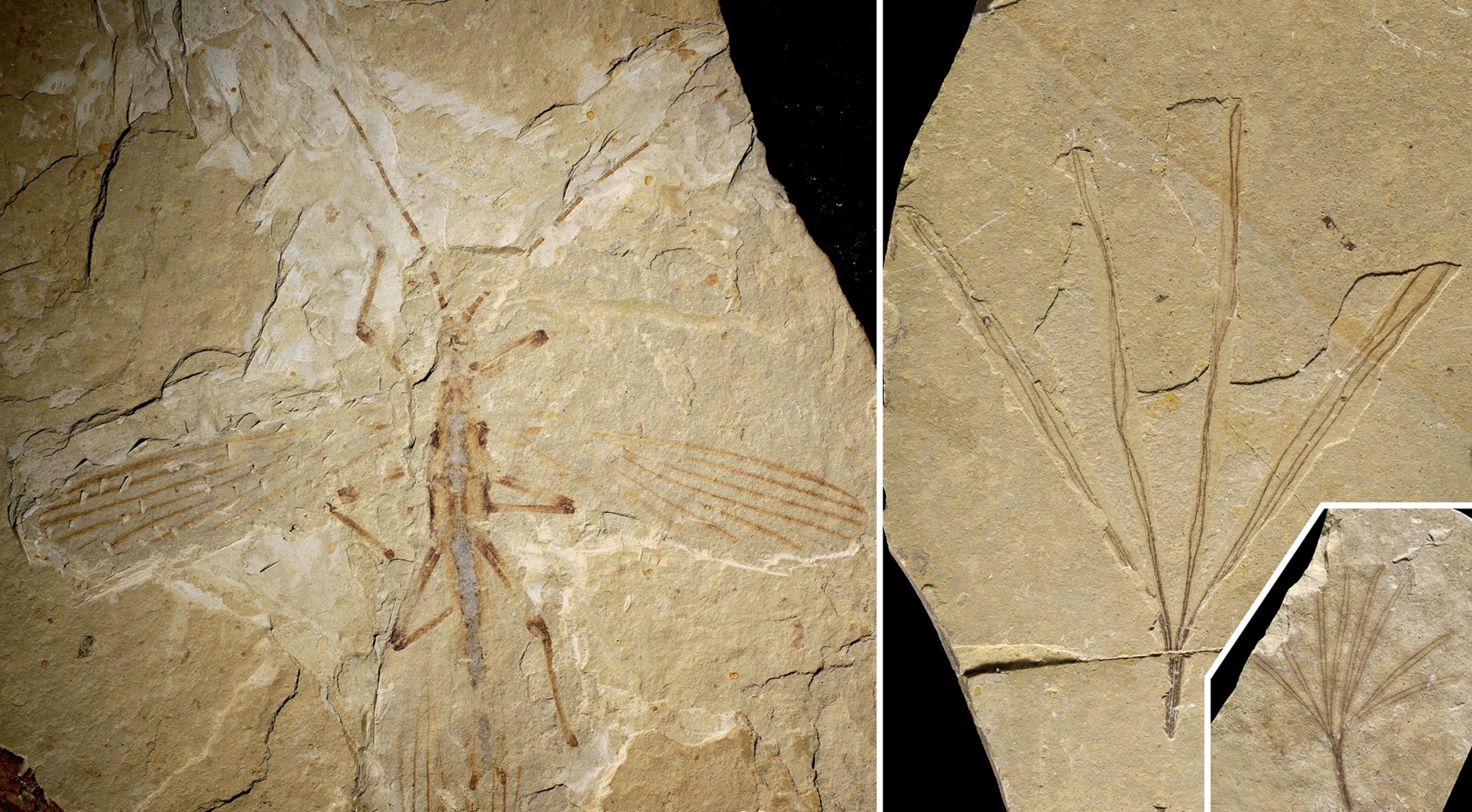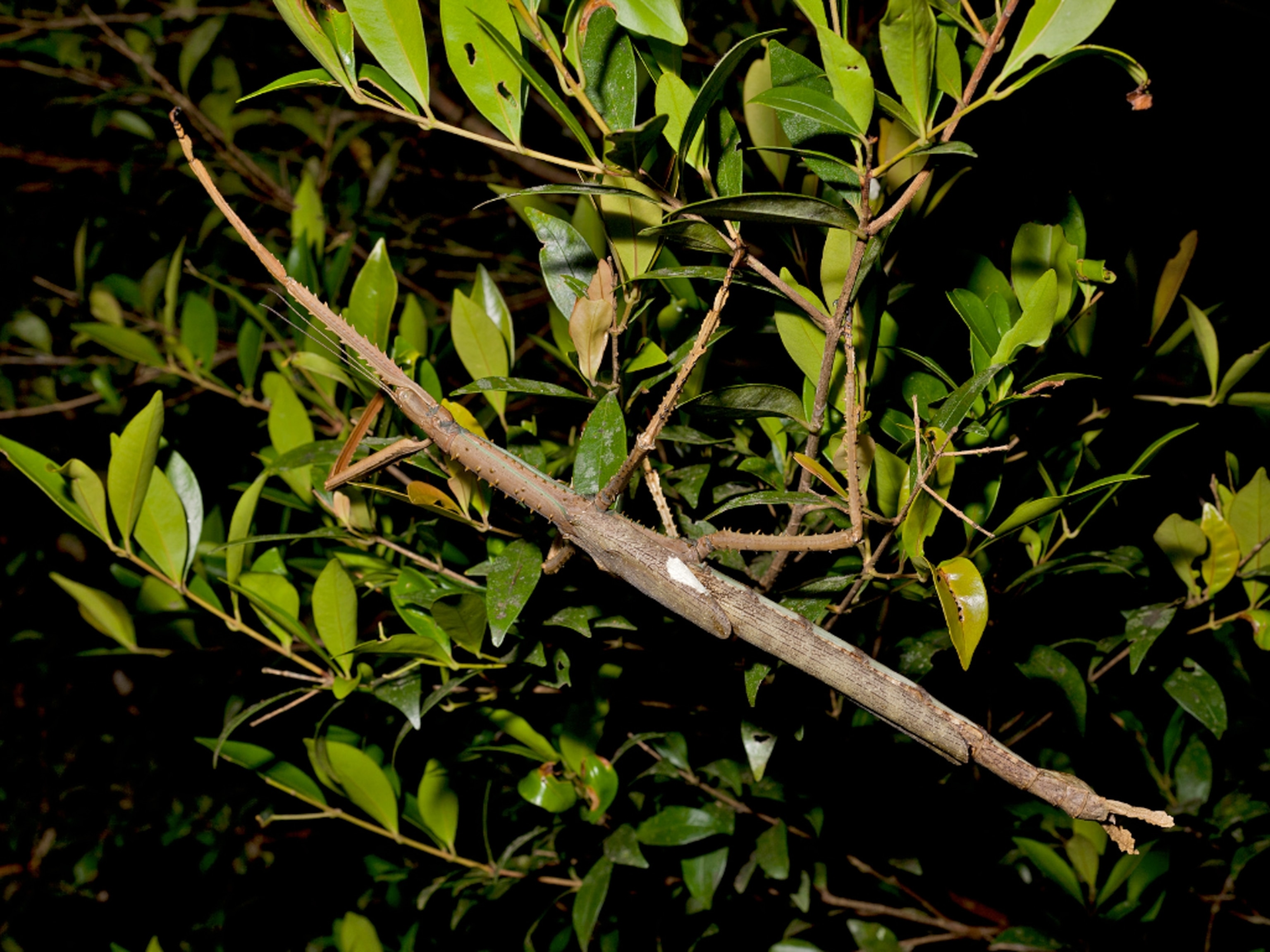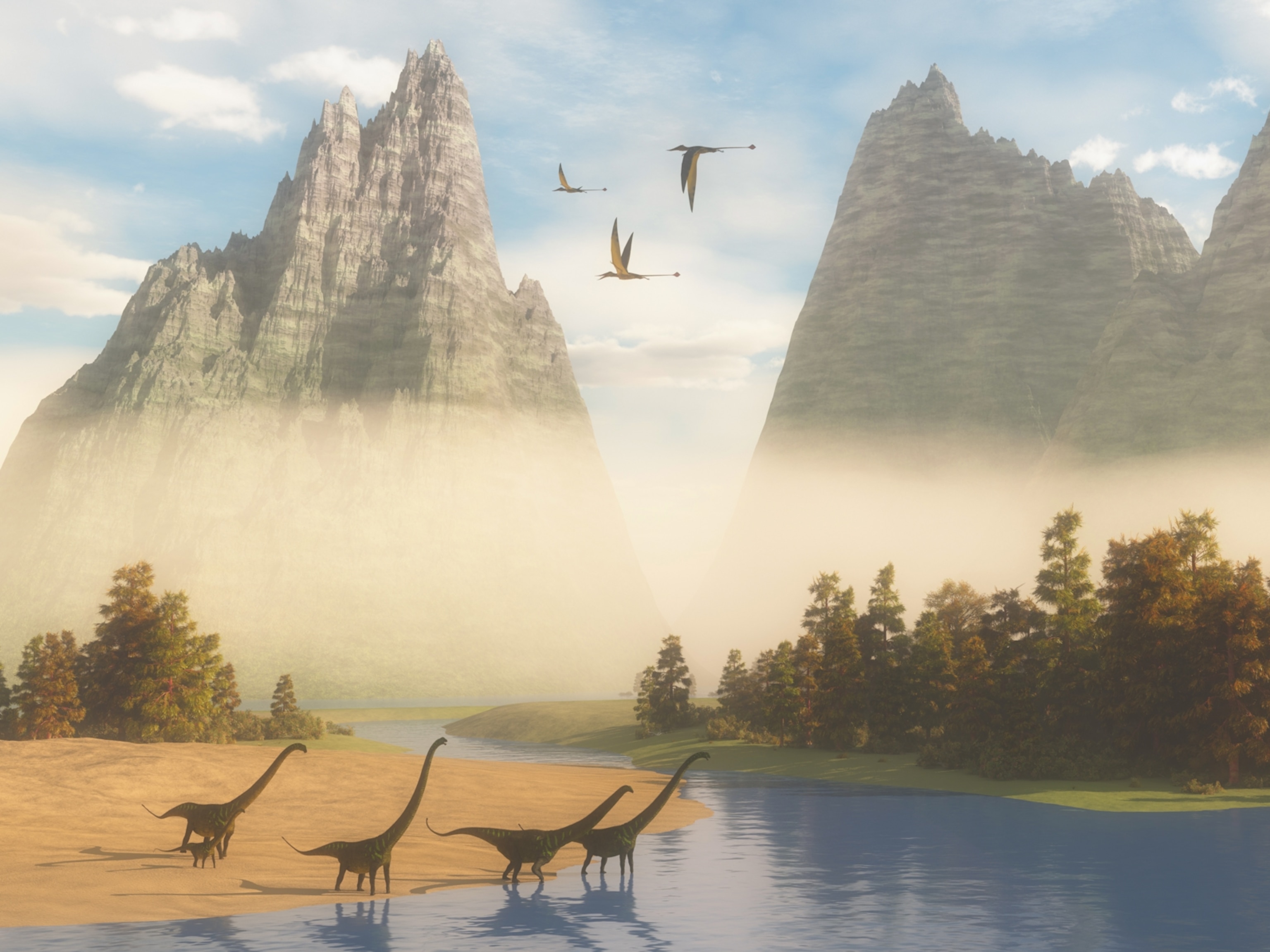
Stick Insects Have Mimicked Plants Since Age of Dinosaurs
Almost as soon as the first birds flew, stick insects disguised themselves as plants.
Walking stick insects disguised themselves as leaves starting some 126 million years ago, report paleontologists, even before the advent of flowering plants.
The fossil discoveries from modern-day Mongolia mark some of the earliest examples of the twig-mimicking stick insects. Today, the praying mantis is the best-known of the 3,000 species of stick insects. They even have a niche following as pets. (See also: "Stick Insects.")
Discovery of the ancient fossil stick insects, dubbed Cretophasmomima melanogramma (which means "ancient black-lined stick insect"), was reported on Wednesday in the journal PLOS One by a team led by Maomin Wang of Capital Normal University in Beijing, China.
"Our grand-cousins were already fooled by grand-cousins of stick and leaf insects 126 million years ago," says Olivier Bethoux of Sorbonne University in Paris, a co-author of the study. "Our discovery demonstrates that plant mimicry by insects was achieved by various insect groups, including stick insects, before the rise of flowering plants."
A New Leaf
The discovery suggests that evolution quickly produced plant-mimicking disguises for bugs with the arrival of the earliest birds and mammals, which visually preyed upon insects during the age of dinosaurs, Bethoux suggests.
"This is yet more tantalizing evidence of early insect-plant coevolution," says paleontologist Sam Heads of the University of Illinois at Urbana-Champaign, who was not on the study team. Insects are poorly preserved in the fossil record, so the new specimens should particularly please scholars, he adds.
The ancient stick insects were about 2.8 inches (70 millimeters) long from tail to antenna tip. Although the three study fossils, one female and two males, derive from a fossil site in Mongolia, the researchers actually uncovered them in collections in France and China, where the specimens had not been studied by experts.
They possessed parallel black lines running along their wings, which at rest likely resembled a ginkgo tree leaf, also preserved as fossils in the Jehol biota regions of China and Mongolia where the stick insects originated.
Cunning Disguises
Scientists had supposed that stick insects started mimicking plants when flowering plants first diversified widely, sprouting bark and twigs in the "great angiosperm radiation" about 100 million years ago.
Other stick insect relatives have turned up from even more ancient locales, Bethoux notes, "although none of these insects exhibit adaptations demonstrating plant-mimicking ability."
But there may be more such walking stick discoveries hiding out there, says insect curator Chris Dietrich of the Illinois Natural History Survey at the University of Illinois.
Because of a shortage of fossil insect experts, "many fossils like the ones described in this paper end up sitting in museums for decades before anyone gets around to studying them."
Follow Dan Vergano of Twitter.





